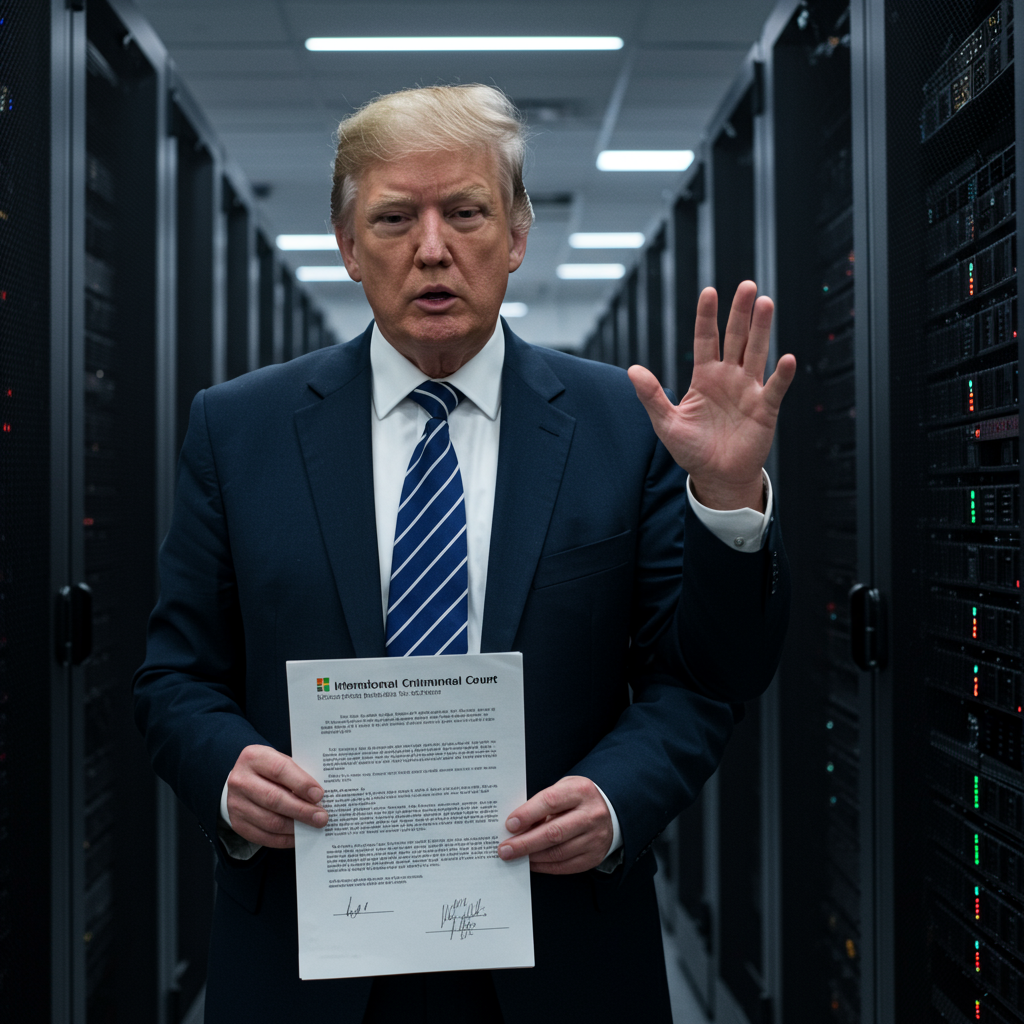A major shift in federal energy policy is underway. Proposed legislative changes and recent executive actions could dramatically alter the landscape for clean energy development in the United States. At the heart of this potential disruption lies a crackdown on tax incentives for wind and solar power projects. Experts warn these moves could significantly slow the transition to renewable energy.
President Trump has directed the Treasury Department to adopt a strict approach. This focus is on enforcing deadlines tied to federal clean energy incentives. His actions anticipate a new budget law’s implications.
How New Legislation Impacts Clean Energy Subsidies
A recently passed budget bill is poised to reshape the future of wind and solar tax credits. This legislation, supported by President Trump and key Republicans, targets incentives established under the Inflation Reduction Act (IRA). The IRA originally extended key credits for clean energy development through 2032.
The new bill significantly shortens this timeline. For most new wind and solar projects, the ability to claim federal tax credits will essentially end by the close of 2027. Projects must be “placed in service” or connected to the grid by this date to qualify for incentives.
Understanding the Phase-Out Timeline
The phase-out isn’t immediate for every project. A transitional rule offers a narrow window. Projects that begin construction within one year of the bill becoming law can still qualify. However, they must meet a crucial condition. They need to be completed and operational by the end of 2027. This differs from earlier proposals. Some drafts suggested a construction start by June 2026 was the key date. The final bill language sets a one-year window post-enactment.
This new deadline creates urgency and uncertainty. Developers must accelerate timelines dramatically. Many projects currently in planning or financing stages face difficulty meeting this rapid deadline. If they fail to come online by the end of 2027, they lose eligibility for vital federal support.
Trump’s Executive Order Mandates Strict Enforcement
Adding to the pressure, President Trump issued a memo to the Treasury Department. This directive demands rigorous enforcement of existing tax credit rules. Specifically, it targets the requirement for projects to begin construction within a year of being certified.
The memo instructs Treasury to “strictly enforce” this construction deadline. It aims to prevent “artificial acceleration or manipulation of eligibility.” This executive order signals a tough stance. It suggests the administration intends to police project timelines closely. The order appears designed to lay groundwork for the stricter rules introduced by the budget bill.
Political Motivations Behind the Stance
The push for stricter rules has clear political roots. President Trump pledged tough executive actions to secure support for the budget bill. This was particularly aimed at appeasing House conservatives. These lawmakers held up the bill partly due to concerns about funding for wind and solar. Many desired to cut off these incentives entirely.
According to analysis by TD Cowen Washington Research Group, the focus on strict construction deadlines has an “obvious intent.” It aims to “raise that standard to impede credit access.” The move aligns with criticisms from some Republicans. They question the reliability of intermittent renewable sources. They also argue tax credits subsidize foreign manufacturers.
Broader Consequences for Clean Energy Goals
The proposed changes extend beyond utility-scale wind and solar. The bill also targets residential clean energy incentives. Starting in 2026, federal tax credits for homeowners could end. These credits currently support installations like rooftop solar panels and heat pumps. They also encourage energy efficiency upgrades such as improved insulation. Over 350,000 New Yorkers alone utilized these credits in recent years.
Furthermore, the bill eliminates the consumer tax credit for purchasing electric vehicles. This comprehensive rollback impacts individuals and families investing in cleaner energy solutions.
Hindering State Climate Targets
States with ambitious climate goals face significant setbacks. New York, for example, aims for a near-complete phase-out of fossil fuels by 2030. Experts warn the federal removal of tax credits could “blow a hole through the heart of [New York’s] clean energy economy.” These incentives have been crucial for making large-scale projects financially viable. Removing them makes projects “exponentially more expensive,” potentially halting development.
Texas, despite being a major oil and gas producer, has also seen significant wind and solar growth. Clean energy advocates there warn the cuts will harm the state’s labor market. They also believe it hinders the ability to meet future energy demand cost-effectively. Losing federal incentives jeopardizes associated benefits. These include cleaner air and the creation of well-paying jobs.
Economic and Environmental Impacts
Critics argue the changes will have negative economic consequences. Analysis suggests the bill could eliminate over 1.6 million jobs nationwide. It might also lead to over $290 billion in lost GDP. By making clean energy projects more expensive or impossible, the bill could lead to higher utility bills for consumers. Some analyses predict an 8% to 10% increase in consumer energy prices due to these changes.
Environmental groups also foresee detrimental effects. They predict an increase in U.S. greenhouse gas emissions. One analysis projects an 8% rise by 2035 compared to existing policy. Making it harder to build new clean energy projects limits the supply of affordable, clean power when it’s needed most.
Retained Incentives and Political Opposition
Not all clean energy technologies face the same cuts. The bill retains tax credits for certain other zero-emission sources. These include advanced nuclear, geothermal energy, and hydropower through 2032. Some argue this “tilts the scales” away from wind and solar. These have received billions in investment over the past decade. Carbon capture technology also retains incentives.
The bill’s passage in the Senate was narrow (51-50). It faced strong opposition from Democrats and environmental groups. They argue it benefits corporations and fossil fuel industries at the expense of families and the environment. Lobbying efforts are expected to continue. Potential legal challenges may also arise as implementation details are finalized.
Some senators, including Republicans from states with significant renewable energy interests like Alaska and Iowa, negotiated changes. Notably, an excise tax on renewable energy components sourced from certain countries like China was removed from the final bill. This tax was projected to add billions in costs. Its removal was a key factor in securing support from some hesitant senators.
What to Watch Next
The budget bill, having passed the Senate, now moves to the House of Representatives. Speaker Mike Johnson has indicated a desire to pass the Senate version quickly. Any changes in the House would necessitate further negotiation.
The focus now shifts to the implementation of the law. Treasury will need to define “strict enforcement” of the construction deadline. Developers will race against the clock to meet the 2027 operational deadline for projects not starting construction within the one-year window.
The landscape for wind and solar development is becoming significantly more challenging. Federal support is being curtailed much faster than previously planned. This creates uncertainty for investors and developers. It also poses new obstacles for states and the nation in meeting clean energy and climate goals.
Frequently Asked Questions
How does the new bill change tax credits for wind and solar projects compared to the previous law?
The new budget bill significantly accelerates the phase-out of federal tax credits for wind and solar. Under the previous law (Inflation Reduction Act), many of these credits were set to continue through 2032. The new bill effectively ends eligibility for most new wind and solar projects by the end of 2027. Projects must be operational by December 31, 2027, to receive credits. There’s a limited exception: projects starting construction within one year of the bill’s enactment can still qualify if completed by the 2027 deadline.
Why are these changes being made, and what are the stated goals of proponents?
Proponents, primarily Republicans and some in the fossil fuel industry, cite several reasons. They argue the changes represent significant taxpayer savings. They also emphasize bolstering traditional energy sources like oil, gas, coal, and nuclear power, claiming this increases grid reliability. Some politicians sought to dismantle these specific clean energy credits to fulfill campaign promises and appeal to certain factions within their party who oppose renewable energy subsidies. The bill’s supporters often frame the changes as correcting elements of the “Biden administration’s ‘green new scam’.”
What are the potential real-world effects of phasing out these wind and solar incentives?
Phasing out these incentives much earlier is predicted to have several negative impacts. Experts warn it will make wind and solar projects much more expensive, potentially halting planned developments and deterring new investment. This could lead to higher electricity bills for consumers and significant job losses in the clean energy sector. The changes are also expected to make it harder for states to meet their climate goals and could lead to an increase in U.S. greenhouse gas emissions. It also removes residential incentives for things like rooftop solar and electric vehicles.
The path forward for wind and solar energy in the U.S. appears significantly tougher under the new federal policy.


